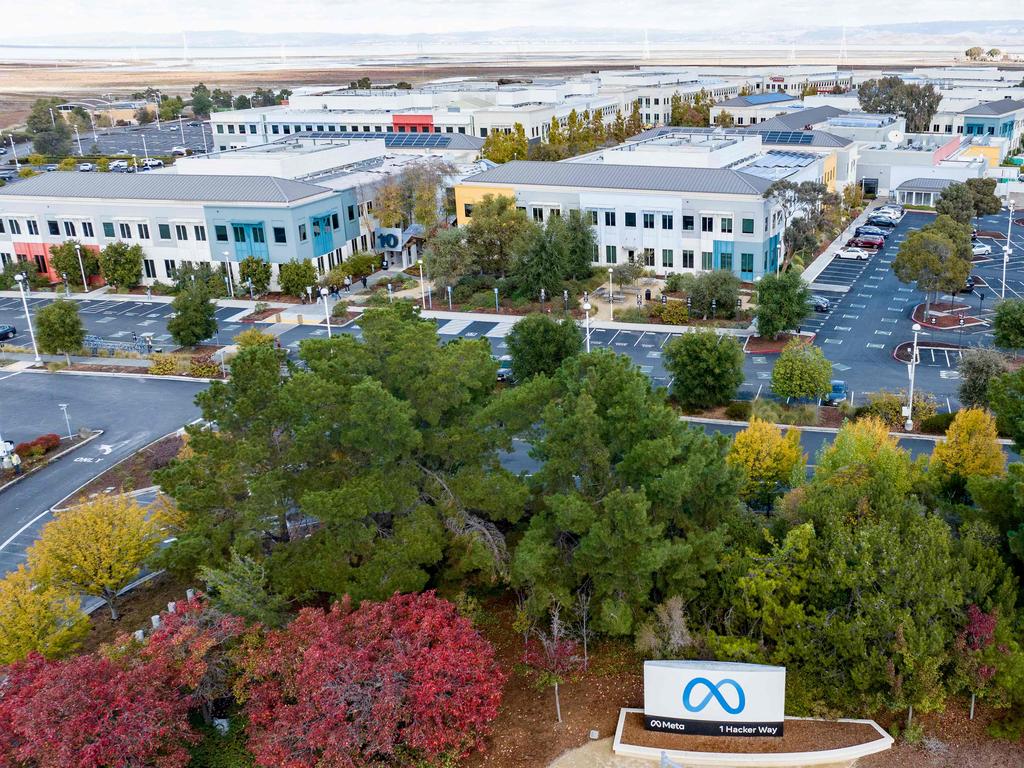
The Meta (formerly Facebook) logo marks the entrance of their corporate headquarters in Menlo Park, California, the U.S., November 9, 2022. /Josh Edelson/AFP via Getty Images
The Meta (formerly Facebook) logo marks the entrance of their corporate headquarters in Menlo Park, California, the U.S., November 9, 2022. /Josh Edelson/AFP via Getty Images
Despite having been aware of it for months, technical workers at Meta had to face the reality of a new round of layoffs.
"I woke up this morning to the unfortunate news that I was one of the many laid-off from Meta today," wrote Teresa Jimenez, a Business Program Manager at Facebook, in a LinkedIn post.
The third round of layoffs this week followed the tech giant's announcement in March of plans to lay off 10,000 workers, adding to the 11,000 cuts it made last November.
Apart from Meta, Google also downsized its workforce, with the company announcing in January its plans to lay off 12,000 people. During that same month, Microsoft said it decided to let go of 10,000 employees.
Job cuts have soared to 171,660 so far this year, surpassing the total of 164,511 layoffs that occurred throughout the entirety of 2020, according to data tracker Layoffs.fyi, a company that tracks tech startup layoffs based in San Francisco.
But what caused the wave of layoffs in the tech industry?

A person walks past Microsoft signage at the headquarters in Redmond, Washington, U.S., January 18, 2023. /Reuters
A person walks past Microsoft signage at the headquarters in Redmond, Washington, U.S., January 18, 2023. /Reuters
Aggressive hiring strategy
The wave of layoffs in the tech sector followed an expansion of the workforce during the pandemic, when tech companies experienced their most profitable quarters ever due to the accelerating trends in remote work and online shopping.
To meet the surging demand of products and services from stuck-at-home consumers, companies went on a hiring spree. The average number of employees of U.S. tech giants including Amazon, Apple, and Microsoft increased by 45 percent in 2020 and 20.5 percent in 2021.
The growth in headcount was partly due to the government stimulus, but also due to companies' misread of the post-pandemic reality, according to Joshua T. White, an assistant professor of Finance and a Brownlee O. Currey Jr. Dean's Faculty Fellow at Vanderbilt University's Owen Graduate School of Management.
The increase in workforce, especially in tech companies, was the result of an "expectation that most people would still work from home and less travel and public socializing would be the new status quo."
However, changes in consumer patterns during the pandemic recovery did not continue as expected, as a reopening world pulled consumers back to brick-and-mortar stores.
Then the deflated online spending caused companies to trim their bloated workforces and lower operating costs due to slumping profits.
Take Meta for example. The company pivoted towards the metaverse, where social interactions were virtual. But once the pandemic-period lockdowns were eased, consumers eagerly returned to travel and changed their spending patterns.
"It is difficult for any company to accurately forecast macroeconomic forces that increase or decrease trends like work and shop from home," Professor White told CGTN.
"Companies like Meta and Amazon that grew quickly to meet pandemic-period demand ended up over-hiring."

The logo of Google LLC is seen at the Google Store Chelsea in New York City, U.S., January 20, 2023. /Reuters
The logo of Google LLC is seen at the Google Store Chelsea in New York City, U.S., January 20, 2023. /Reuters
Rising interest rates
Since the tightening began in March 2022, the federal funds rate has increased by a total of 450 basis points to manage inflation, resulting in a rapid rise in interest rates throughout the economy.
In March 2023, the Federal Reserve announced another 25 basis point interest rate hike, setting the benchmark rate at its highest level since 2007. This resulted in restrained consumer spending and a decline in demand, forcing companies to reduce their output and headcount.
"These rate increases affect tech companies more because a larger portion of their value rests on future growth projects that take several years to pay off," Professor White told CGTN, noting that these projects are worth relatively less in present value terms when interest rates rise.
"Between the reality of pandemic period spikes in growth and rising interest rates, tech companies realized they overhired," he said.
The U.S. experienced record low interest rates during the 2010s, and highly trained human capital like coders or engineers was likely the one thing keeping these companies from growing even faster in a near-zero interest rate environment.
With the realities now that companies are facing macroeconomic headwinds, rising interest rates, and a slowdown in company spending on things like ads, all companies are looking for cost-cutting measures.
"But for tech companies, cost-cutting unfortunately means layoffs," said Professor White, adding that employees are their most valuable assets, but also their most costly. So layoffs are needed to "signal to shareholders that management will steer the company through this economic downturn successfully and maintain profitability and investor returns."

Meta's corporate headquarters in Menlo Park, California. /AFP
Meta's corporate headquarters in Menlo Park, California. /AFP
A looming economic downturn
Job cuts have begun to flow across the tech sector since last year. Major tech companies cut their workforce amidst a period of slowing sales growth, hoping to buttress margins and allay investors' concerns.
The wave of layoffs continues this year as companies facing economic headwinds are trying to adapt to an unsettled economic climate.
For most U.S. consumers, inflation ran far ahead of the pay they received. They pulled back sharply on their spending in February after a strong start to the year, according to the U.S. Commerce Department.
Meanwhile, companies are facing challenges brought on by a tough market for advertising. Digital advertisers are cutting their spending amid higher-than-normal inflation, as the inflation rate last summer hit a record high in forty years.
In 2022, Google and Meta collectively brought in less than half of all U.S. digital advertising spending for the first time since 2014, according to Insider Intelligence, a market research company headquartered in New York.
As Professor White noted, many technology companies have underestimated the broader economic slowdown and had to adjust to the reality that they are overstaffed.
These layoffs were not indicative of "particularly egregious management" by any particular company. Instead, it reflects "overexuberance in the entire tech industry" that their period of growth and high profit would continue.
"I expect we will see other tech companies and potentially those in other industries that rely heavily on people (e.g., finance) announce layoffs in the near future," said Professor White.